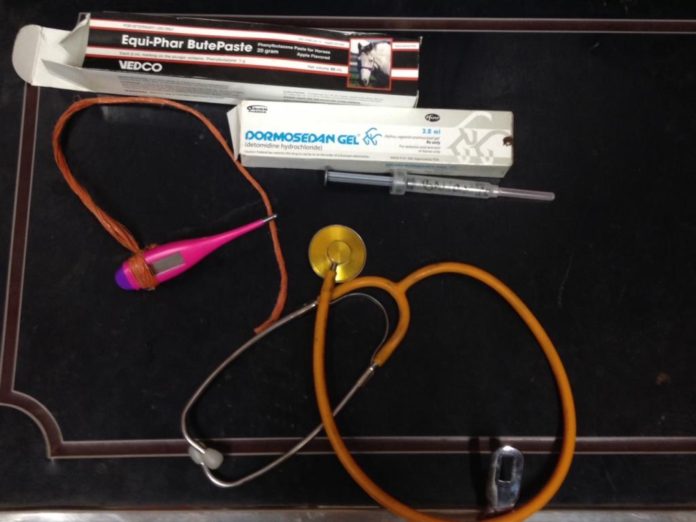Knowing how to check your horse’s vitals is, well, vital for any horse owner.
Not only does knowing the baseline for your horse make it easier to tell when something isn’t right, being able to communicate vitals to your vet helps them diagnose problems and give you instructions on what to do until they can arrive, not to mention potentially determining response time.
Appropriate tools for any tack room should include a thermometer (digital is easy but can run out of batteries-be sure to keep a spare or store with the batteries out) and a stethoscope. I keep a “crash kit” in addition to my first aid kit that includes the above mentioned tools as well as a few doses of painkillers, antihistamine, and a sedative. It is by no means complete, but I feel that I am armed and prepared to handle most any situation until the vet can arrive.
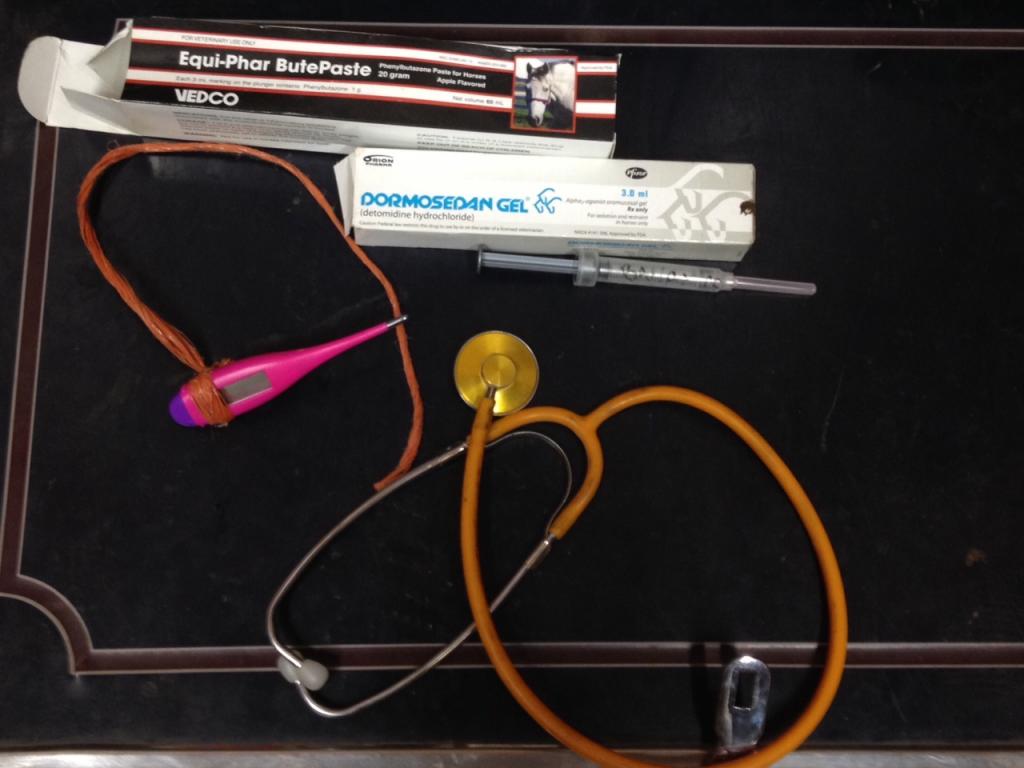
The most obvious red flag is if your horse is off his feed. The phrase “eat like a horse” didn’t make its way into the lexicon for no reason and I have never heard of a horse who “just isn’t really hungry right now, thanks.” If he isn’t eating, he probably isn’t 100% and it is time to investigate further.
Related is the amount and consistency of poop. I have developed the charming habit of counting poo piles every time I visit the barn. Totally normal-or at least that’s what I am looking for!
Think you have a situation? Take your horse’s vitals and write them down so you can compare as time passes. Your vet and horse will thank you!
Respiration-normal range is between 8 and 12 breaths per minute
I like to watch the ribcage and count breaths as it rises. Count the number of ribcage rises that happen in 15 seconds then multiply by 4. This number is your breaths per minute. I usually do it twice to take some of the paranoia out of a potentially paranoid situation.
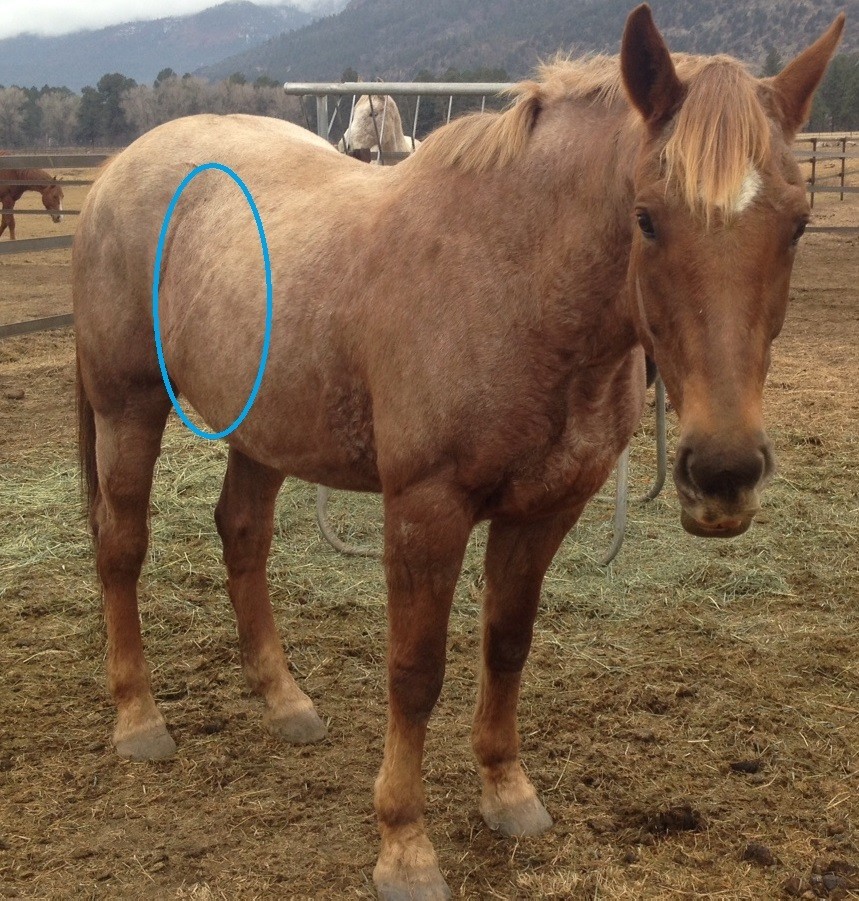
Heart Rate-normal range is 36-42 beats per minute
Here’s where the stethoscope is handy. Place the business end of your stethoscope a couple inches behind the point of the left elbow-you may need to move it around until you lock in on the heart beat. Count the beats for 15 seconds and multiply by four-this is your beats per minute. Again, I do this one twice just to make sure I have an accurate measurement.
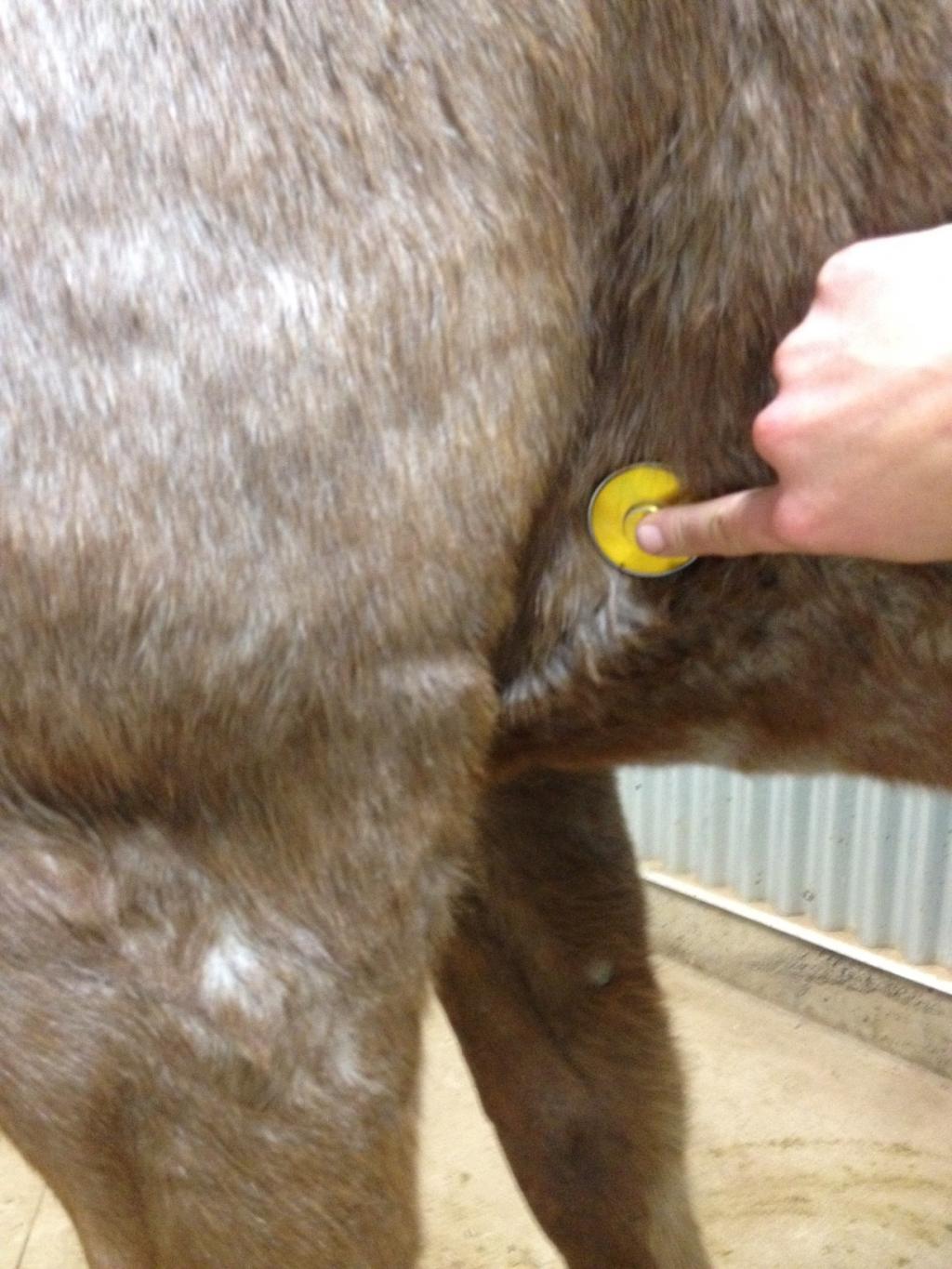
Temperature-normal range is between 99.8 and 101.3 degrees Fahrenheit
Taking the temperature is a fairly straightforward process-put a dab of Vaseline or veterinary lube on your thermometer and insert it into your horse’s rectum. Follow the manufacturer’s instructions for your thermometer. It’s a good idea to tie a string to the end of your thermometer so you don’t lose it up there. This whole process goes a little smoother if your horse is used to having their tail lifted-I make a point of playing with the tailbone and scratching all around the dock each time I groom-especially on young horses.
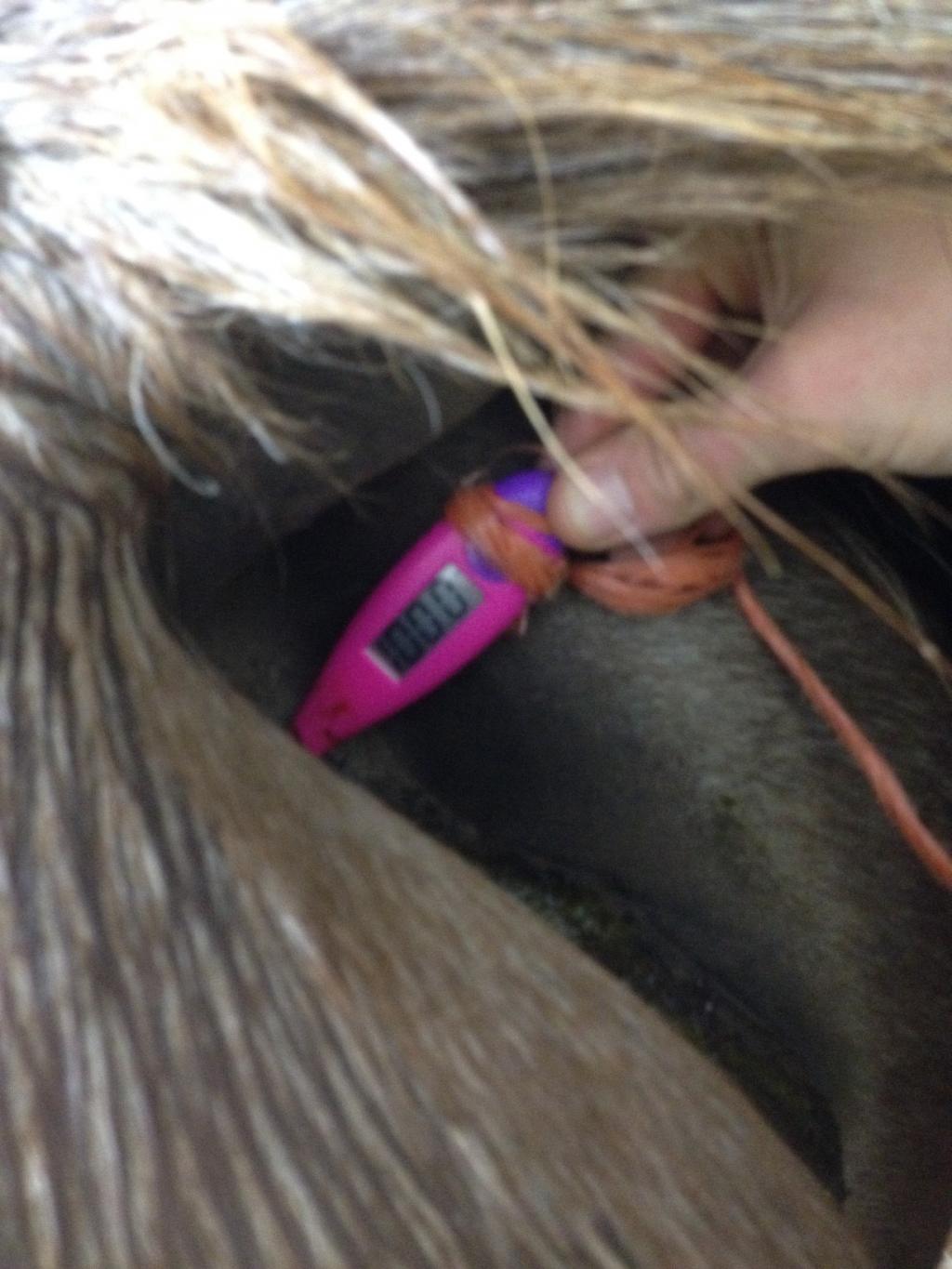
Hydration-skin should return to flat within 1 second of being pinched (tented)
Capillary Refill/Gum Color- looking for healthy pink color and 1-2 seconds to refill
The simplest way to tell if your horse is sufficiently hydrated is to pinch a 1-2 inch fold of skin on the neck and see how long it takes to go back to flat. A well hydrated horse will snap back within a second or two. Longer than that indicates dehydration. You can also pull his lip up and press the gum firmly with your finger-the pressure point will turn white and should return to healthy pink within a second or two. While you are looking at the gums, note what color the skin is all over-a healthy horse should be bright healthy pink. Pale, yellowish, or dark are all red flags and indicative of a problem.
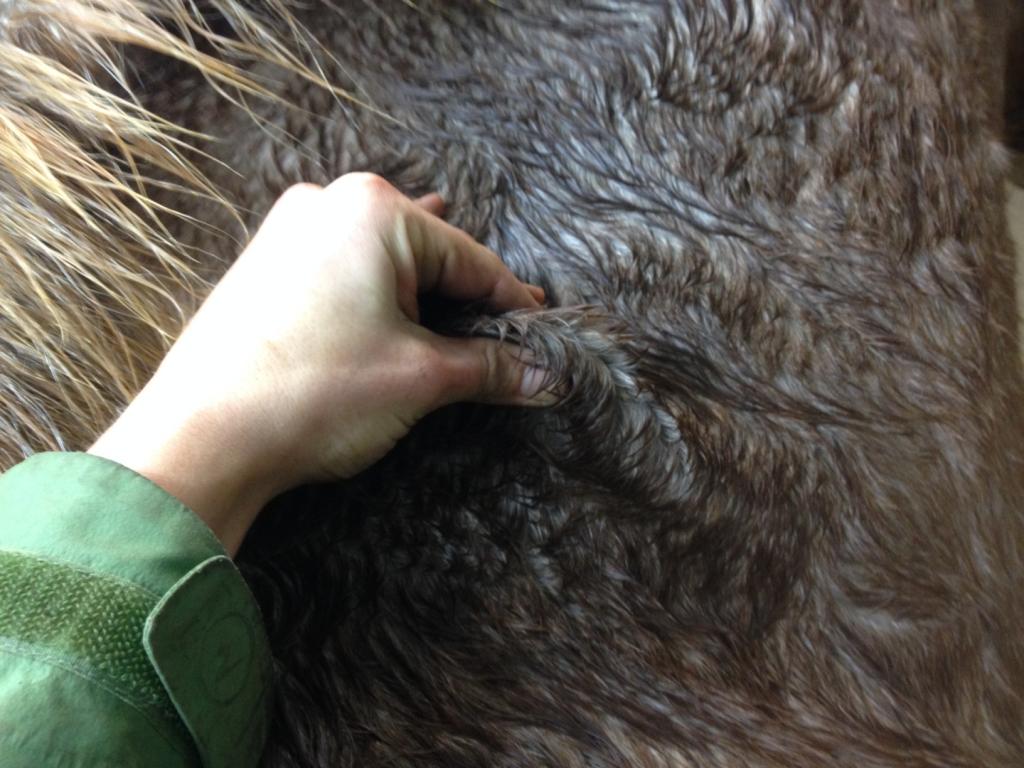
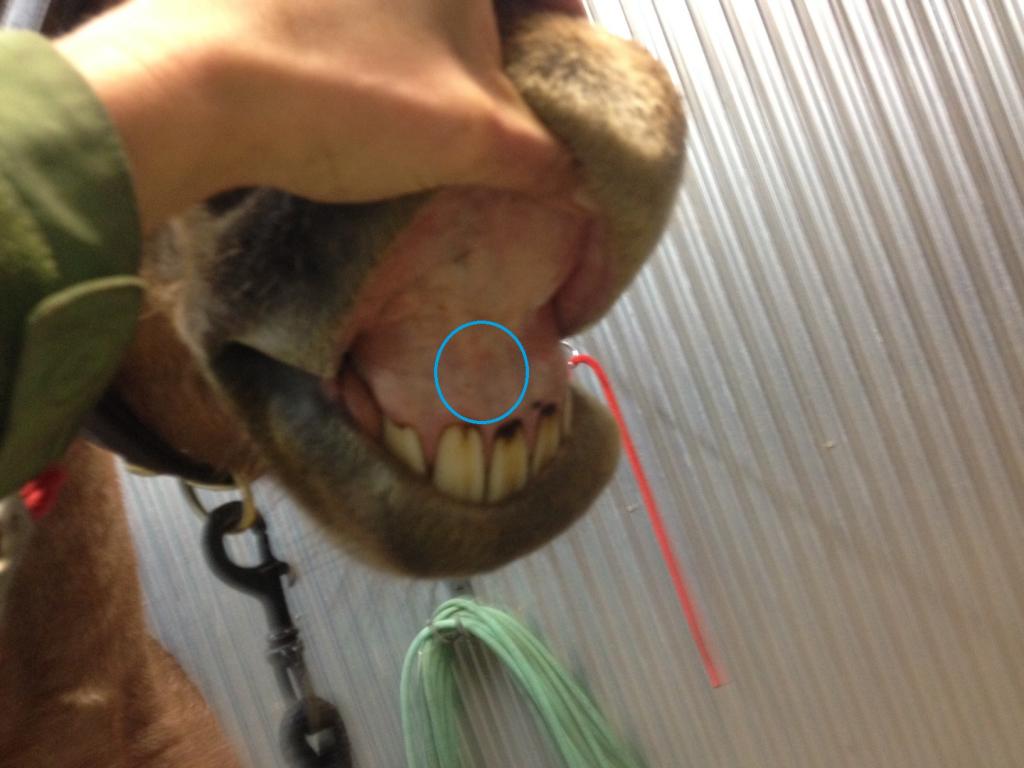
It’s too bad that our four legged friends can’t just tell us how they feel, but now you are armed with the info you need to be a first rate equine observer. If you want a quick read on taking the digital pulse, you can check out my blog here. Until next time, get out there, take some vitals, and enjoy the ride-in your EasyCare boots, of course!
Rebecca Balboni

Customer Service Representative
A lifetime of riding and showing sport horses has given me a deep appreciation for the importance of soundness and comfort on performance. Let me help elevate your equine experience by finding the right boot for your horse and unique situation.


